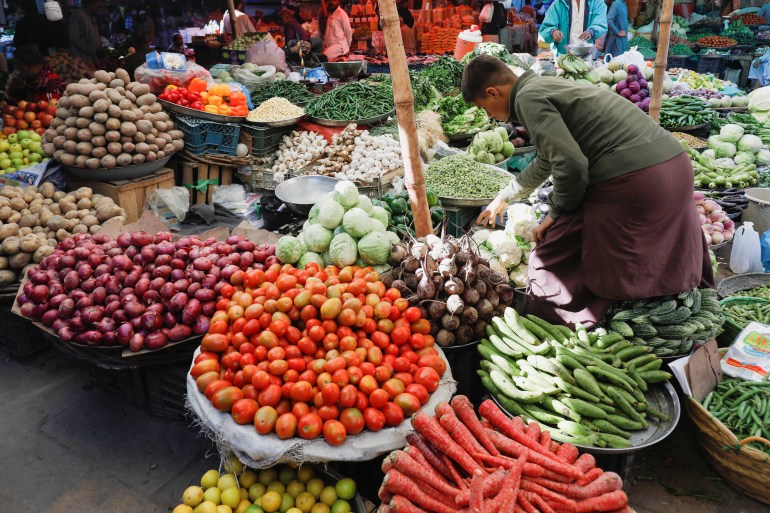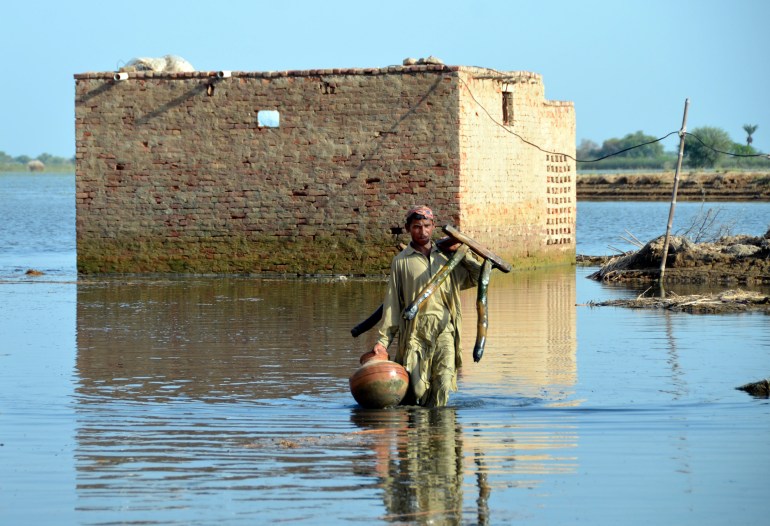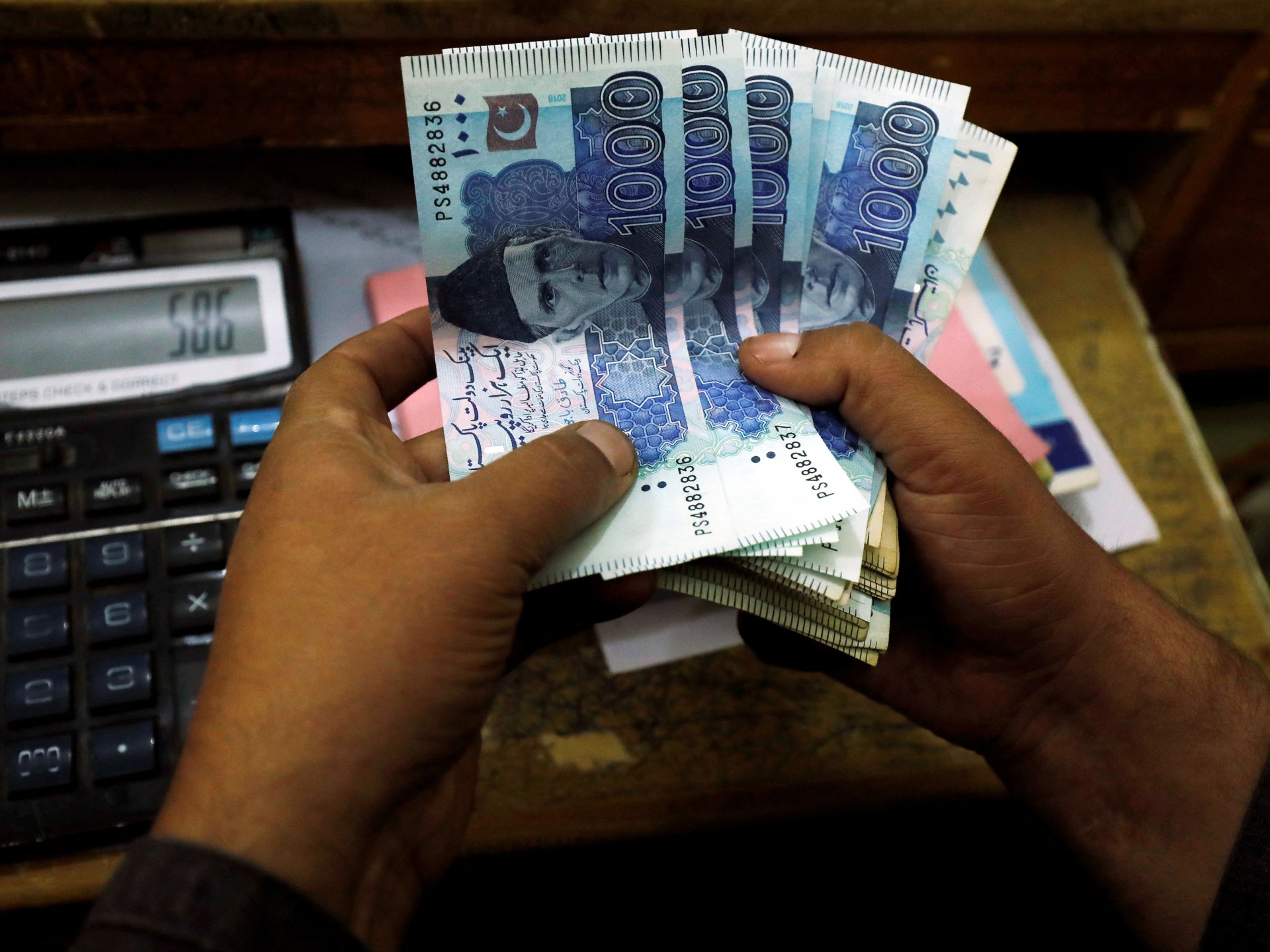Will Pakistan’s IMF agreement save its economy? | News
The International Monetary Fund’s board approved a $3bn bailout program for Pakistan on Wednesday, which includes the immediate disbursal of about $1.2bn to help stabilize the South Asian country’s economy.
Pakistan and the fund reached a staff-level agreement last month, securing a short-term pact, which got more funding than expected for the country of 230 million facing an acute balance of payments crisis.
The bailout had been on hold since December when the IMF refused to release a critical $1.1bn part of the loan because of the country’s lack of compliance with a 2019 agreement signed between the IMF and former Prime Minister Imran Khan.
The release of funds comes amid longstanding fears the country would default, providing much-needed relief to the incumbent government.
However, the agreement with the international lender also means strict conditions when it comes to spending and structural reforms that are likely to further increase economic hardship for many common people.
Here is what you need to know:
Why was the IMF bailout needed?
Pakistan’s economy has been in dire straits, hit by a balance of payments crisis as it attempted to service high levels of external debt and crushing inflation.
Before the bailout, the country’s foreign reserves were teetering at around $4bn, an amount good enough to cover a month’s worth of imports, although Pakistan banned some of the imports to save dollars.
According to analysts, the country needs at least $20bn in the next two years to pay back foreign loans with interest.
Earlier this year, the Pakistani rupee dove to a historic low against the US dollar after an exchange cap was lifted as the cash-strapped nation sought to unlock the vital IMF bailout.

Lahore-based economist Ali Khizr told Al Jazeera that “the currency and inflation could have gone out of control” had the government and IMF not reached this agreement.
“The absence of foreign exchange could have resulted in massive shortages of fuel, food, medicine, and other items. Things are likely to improve now – as the currency will stabilize and inflation will slowly come down in the short to medium term,” Khizr said.
In February, Global rating agency Moody’s cut Pakistan’s sovereign credit rating by two notches to ‘Caa3’, saying the country’s increasingly fragile liquidity “significantly raises default risks”. According to local media outlet Express Tribune, more than 750,000 people left Pakistan in 2022, a threefold increase from the previous year.
To make matters worse, the catastrophic floods of last year caused a loss of some $30bn to the economy, from which Pakistan has still not fully recovered.
What is the IMF asking for?
Islamabad has taken several steps demanded by the IMF since its mission arrived in Pakistan in February, including revising its 2023-24 budget and raising its policy rate to 22 percent in recent weeks.
The Washington-based international lender also got Pakistan to raise more than 385 billion Pakistani rupees ($1.34bn) in new taxation to meet the IMF’s fiscal adjustments. The IMF has said the central bank should remain proactive to reduce inflation and maintain a foreign exchange framework.
The adjustments have already fuelled all-time high inflation of 38 percent year-on-year in May, the highest in Asia.
Meanwhile, reforms in the energy sector, which has accumulated nearly 3.6 trillion Pakistani rupees ($12.58bn) in debt, have been a cornerstone of the IMF talks.
The IMF said it would want steadfast policy implementation by Pakistan to overcome challenges, “particularly in the energy sector”, where it expects a rise in electricity prices.

What has been the reaction?
Prime Minister Shehbaz Sharif has said the agreement was “a major step forward” in his coalition government’s efforts to stabilize the economy and achieve macroeconomic stability.
“It bolsters Pakistan’s economic position to overcome immediate to medium-term economic challenges,” he said. The country’s Finance Minister Ishaq Dar said things were now “moving in the right direction”.
According to analysts, the approval of the IMF bailout will help Pakistan because it could encourage other international financial institutions to help Islamabad overcome economic challenges.
The approval for the IMF loan came a day after Saudi Arabia deposited $2bn into Pakistan’s central bank. On Wednesday, the United Arab Emirates also deposited $1bn into the central bank, according to finance minister Dar.
On Thursday, Pakistan’s sovereign dollar bonds rallied on the back of the IMF deal.
How will the bailout impact the upcoming elections?
While the IMF bailout provides some wiggle room to try to tackle the country’s economic turmoil, it is unclear whether the announcement will bolster Sharif and his PML-N party’s chances at the polling booth.
“This [bailout] will help the government to salvage the loss in popularity of high inflation and negative growth in the last year. This bodes well for the government,” economist Khizr said.
“However, their popularity will remain low due to bad economic management and purchasing power erosion,” he added.
Since former Prime Minister Khan was removed in a vote of no confidence in April 2022 led by the Pakistan Democratic Movement (PDM) – a ruling coalition of more than a dozen parties, including Sharif’s PML-N – the political crisis in the country has gone from bad to worse.
In March, a survey published by the polling group Gallup reported that some 62 percent of people in the country blamed the PDM for Pakistan’s economic woes.
Meanwhile, among the 2,000 respondents, some 61 percent had a favorable opinion of Khan, who has also won a majority of national and provincial by-elections that took place in the past year and that have cemented his popularity in the country.
However, Khan’s political future looks uncertain too after the violent protests that occurred following his brief arrest on May 9, which included attacks on military installations. Thousands have been arrested, many without any formal charges, and military courts have been announced to try the alleged perpetrators.

